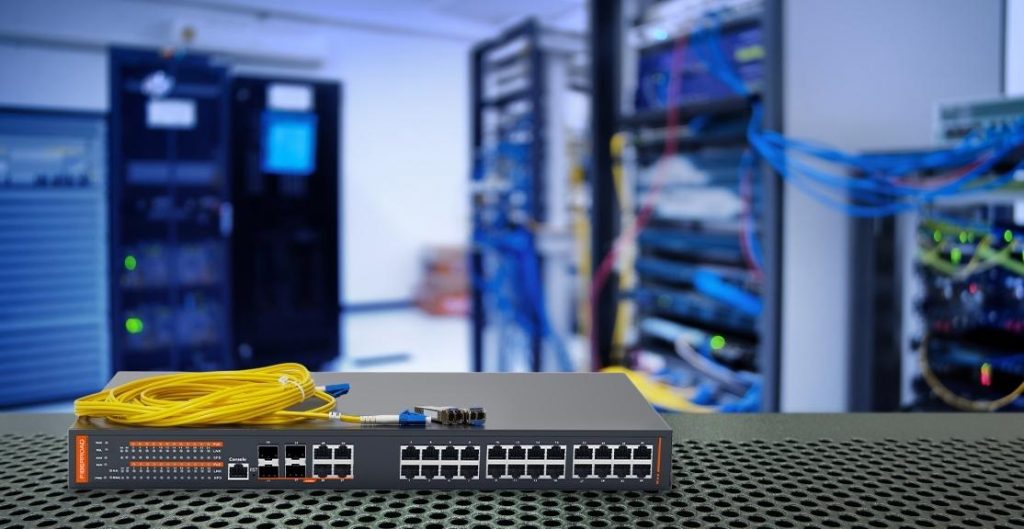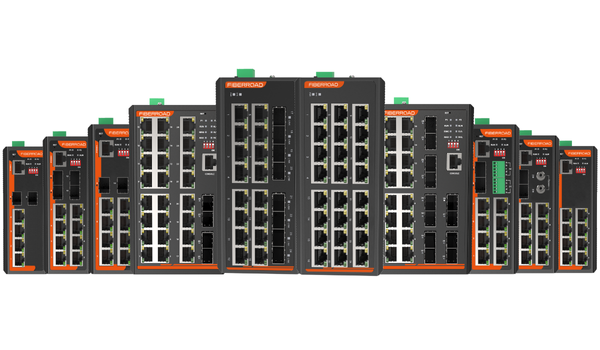
What to Consider When Buying a Network Switch?
A network switch is a key part of any business or office network. It’s responsible for connecting all of the devices on the network and ensuring that data flows smoothly between them. There are a lot of different features to consider when choosing a network switch, and it can be tough to know which ones are the most important. In this blog post, we’ll go over eight of the most important features to look for in a network switch. By the end, you’ll have a better idea of what to look for to ensure your network runs smoothly.
Port density
Switch port density is the number of physical ports on a switch. A high-density switch will have more ports than a low-density switch, allowing you to connect more devices to your network.
When choosing an industrial ethernet switch, you should consider the port density that you need. If you have a lot of devices that need to be connected, then you will need a high-density switch. However, if you only have a few devices, then you can get away with a low-density switch.
The port density of a switch can also be affected by the type of ports that it has. For example, some switches have Gigabit Ethernet ports while others have 10 Gigabit Ethernet ports. The port type will determine how fast data can be transferred between devices.
Port speed
The speed at which data can be transferred between devices on a network is an important factor to consider when choosing a switch. The port speed is the maximum amount of data that can be transferred through a single port on the switch. If you have devices on your network that require high bandwidth, you will need to choose a switch with higher port speeds.
Scalability
As your business grows, you will need an industrial network switch that can accommodate more devices and connections. Scalability is an important feature to consider when choosing a network switch. Look for a switch that offers modular expansion. This will allow you to add more ports as needed, without having to replace the entire switch. Another thing to consider is the number of VLANs supported by the switch. VLANs can help segment your network and improve traffic flow. Choose a switch that supports at least 32 VLANs.
Energy efficiency
One of the most important features to consider in your network switch is its energy efficiency. Many switches on the market today are designed to save power, which can help reduce your overall energy costs. Look for a switch that is Energy Star certified and/or has other energy-saving features such as power-saving mode or port shutdown.
Manageability
When you’re looking for a new network switch, there are a few key features you should keep in mind to ensure optimal performance and manageability for your network. Here are some things to look for:
Ease of Use: A good network switch should be easy to set up and manage. Look for a switch with a user-friendly interface that makes it easy to configure settings and monitor network activity.
Flexibility: Choose a switch that offers flexible port configuration options to accommodate your specific networking needs. You should also be able to easily expand your network by adding additional switches as needed.
Performance: Make sure the industrial poe switch you select can handle the bandwidth requirements of your network. It’s also important to choose a switch that offers the quality of service (QoS) features to prioritize traffic and ensure smooth performance even during peak times.
Reliability: When it comes to network infrastructure, reliability is key. Choose a switch that is designed for high availability and provides redundancy features to keep your network up and running even if one component fails.
Security
When it comes to your network switch, security should be one of your top priorities. There are a number of features to look for in a network switch that can help improve the security of your network, including:
- Port security: Look for a network switch that offers port security features, such as the ability to limit the number of MAC addresses that can be associated with each port or the ability to restrict traffic from specific MAC addresses.
- Access control lists: Choose a network switch that supports access control lists (ACLs) in order to better control and monitor traffic on your network.
- 802.1X authentication: Select a network switch that supports 802.1X authentication in order to require devices connecting to your network to authenticate before being able to access any resources.
- VLANs: Utilize virtual LANs (VLANs) in order to segment your network and keep sensitive data isolated from less secure parts of your network.
By considering these factors when choosing a network switch, you can help ensure that your network is more secure against potential threats.
Quality of Service (QoS)
It is important to consider the quality of service (QoS) when selecting a network switch. QoS can be used to prioritize traffic and ensure that mission-critical data is always transmitted first. This can be especially important in industrial or medical applications where a lost packet could mean lost production or even loss of life. There are many different types of QoS, so be sure to select a switch that supports the type you need.
Budget
When it comes to choosing a network switch, one of the most important factors to consider is your budget. There are a wide variety of switches on the market, ranging in price from around $50 to over $1,000.
If you’re on a tight budget, there are still some great options available. The FR-5A3010P is a great option for those on a tight budget. It offers fast speeds and has plenty of features for a small home or office network.
If you have a bit more to spend, the FR-5M3424 is a great option. It’s rated for small business use and offers 28 Gigabit Ethernet ports. It’s also stackable, so you can add more switches as your needs grow.
For those with a large budget, the FR-5M3448 is a top-of-the-line option. It offers up to 48 Gigabit Ethernet ports and is designed for high-density deployments.
Conclusion
There are a lot of different features to consider when choosing a network switch, but these eight are some of the most important. By keeping these factors in mind, you can narrow down your options and choose the best switch for your needs. Do you have any other features that you consider essential in a network switch? Let us know in the comments below!






